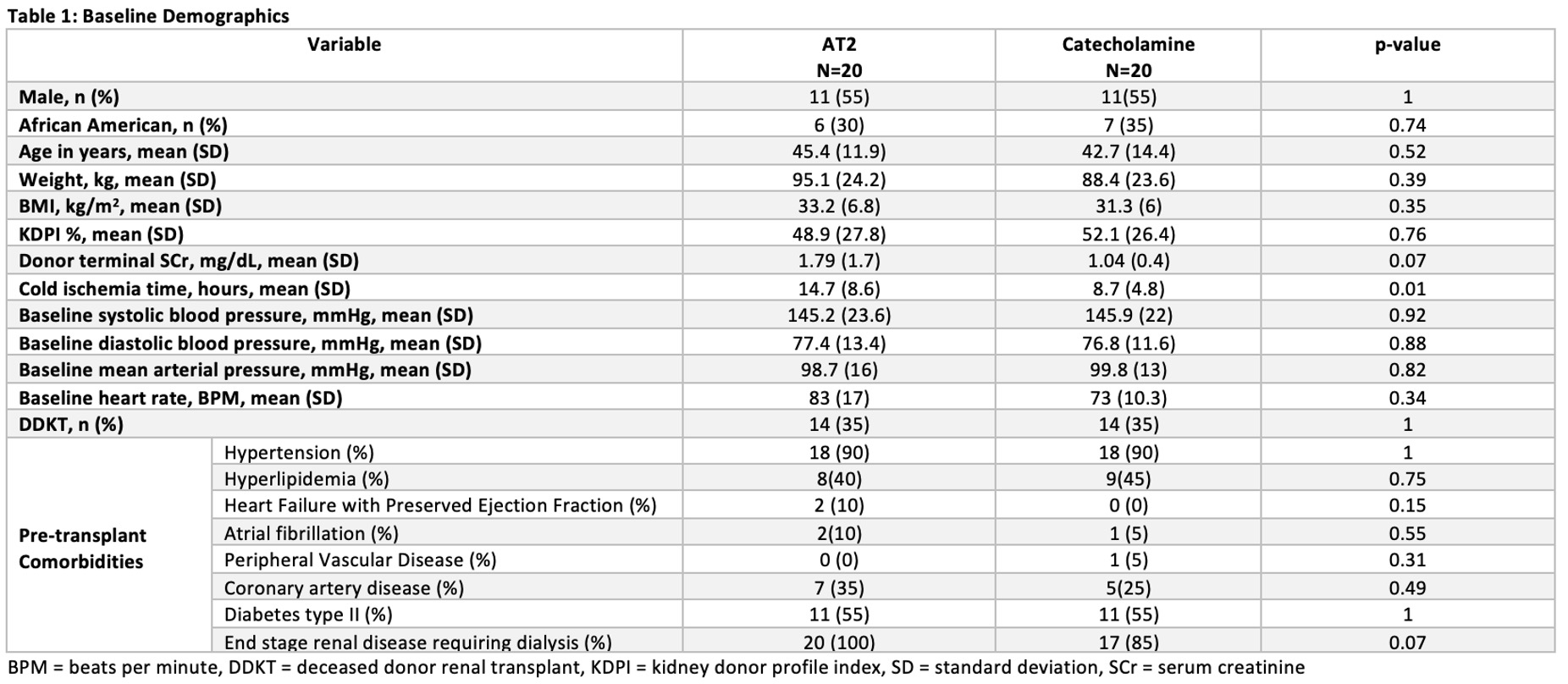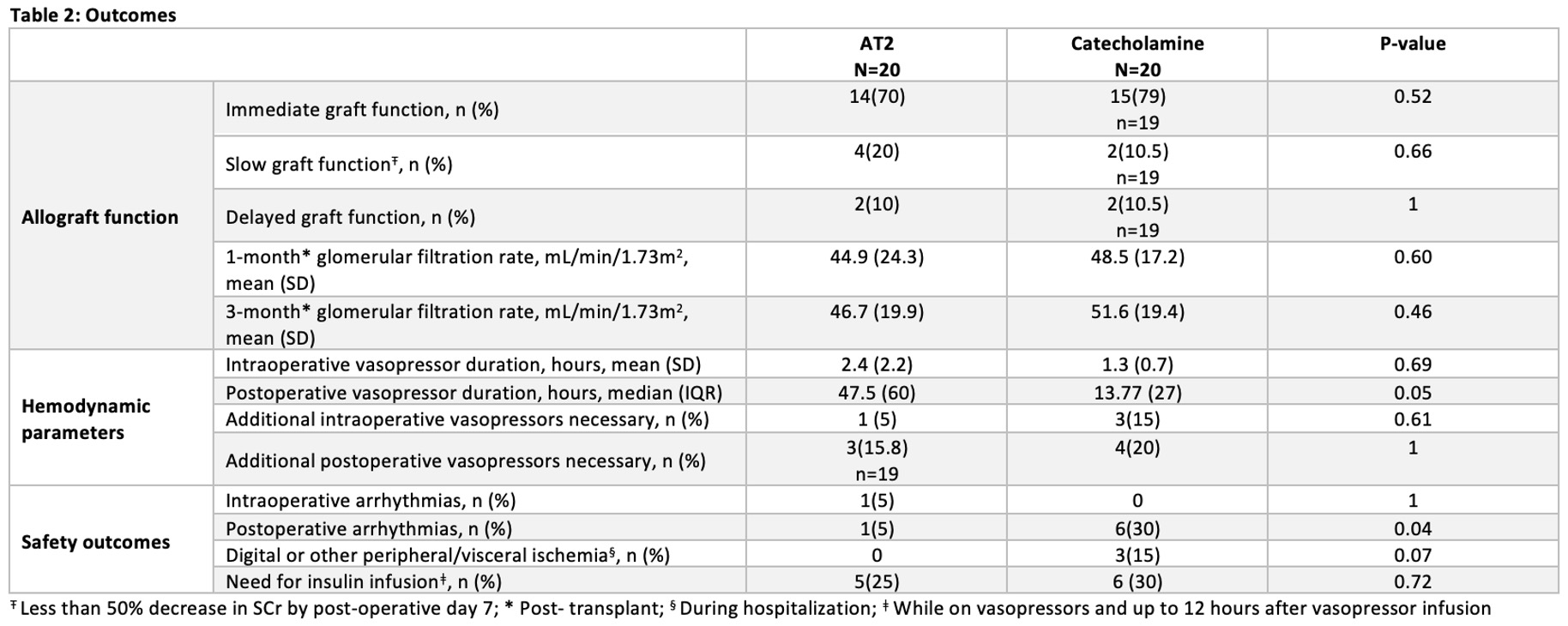Efficacy and Safety of Angiotensin II Compared to Catecholamine Vasopressors as a First-Line Vasopressor for Perioperative Hypotension in Kidney Transplant Recipients
G. Urias1, J. Benken1, A. Lichvar2, D. Pierce1, L. Andrews1, K. Dalton3, A. Datta1, H. Nishioka1, E. Benedetti1, S. Benken1
1University of Illinois at Chicago, Chicago, IL, 2University of California San Diego Health, San Diego, CA, 3St. David's Healthcare, Austin, TX
Meeting: 2022 American Transplant Congress
Abstract number: 780
Keywords: Kidney transplantation, Perfusion, Post-operative complications, Renal dysfunction
Topic: Clinical Science » Kidney » 35 - Kidney: Cardiovascular and Metabolic Complications
Session Information
Session Name: Kidney: Cardiovascular and Metabolic Complications
Session Type: Poster Abstract
Date: Saturday, June 4, 2022
Session Time: 5:30pm-7:00pm
 Presentation Time: 5:30pm-7:00pm
Presentation Time: 5:30pm-7:00pm
Location: Hynes Halls C & D
*Purpose: Perioperative use of catecholamine vasopressors (CV) in kidney transplantation (KT) have been associated with negative renal outcomes and the development of arrhythmias. A more balanced renal vasoconstriction with angiotensin II (ATII) may benefit renal hemodynamics and preserve allograft function, while avoiding arrhythmic complications. We aimed to compare the efficacy and safety of ATII to CV when used for perioperative hypotension in KT.
*Methods: This single-center, retrospective, cohort study included adult patients with perioperative distributive shock requiring vasopressors during KT. Patients who received either ATII or CV were matched via propensity scoring. Propensity scoring was based on African American race, male, deceased donor KT (DDKT), body mass index, donor terminal serum creatinine (SCr), and cold ischemic time (CIT). The primary objective of efficacy was divided into two parts: short-term allograft function and hemodynamics. Secondary objective examined adverse events.
*Results: With the exception of donor SCr and CIT, patients were well matched with respect to baseline demographics (Table 1). There were no differences in the incidence of immediate, slow, delayed graft function, or 1-month and 3-month glomerular filtration rate (p >0.05). The need for additional continuous infusion vasopressors both intra- and postoperatively were also similar (p >0.05) (Table2). The duration of intraoperative vasopressors was similar between groups, but postoperative vasopressors were used longer in the ATII group (47.5 hours vs. 13.77 hours, p=0.046). There were significantly less postoperative arrhythmias in the ATII group (5% vs 30%, p=0.037).
*Conclusions: ATII was equally as efficacious as catecholamine vasopressors when used for perioperative hypotension surrounding KT, with a lower incidence of arrhythmias.
To cite this abstract in AMA style:
Urias G, Benken J, Lichvar A, Pierce D, Andrews L, Dalton K, Datta A, Nishioka H, Benedetti E, Benken S. Efficacy and Safety of Angiotensin II Compared to Catecholamine Vasopressors as a First-Line Vasopressor for Perioperative Hypotension in Kidney Transplant Recipients [abstract]. Am J Transplant. 2022; 22 (suppl 3). https://atcmeetingabstracts.com/abstract/efficacy-and-safety-of-angiotensin-ii-compared-to-catecholamine-vasopressors-as-a-first-line-vasopressor-for-perioperative-hypotension-in-kidney-transplant-recipients/. Accessed December 14, 2025.« Back to 2022 American Transplant Congress


